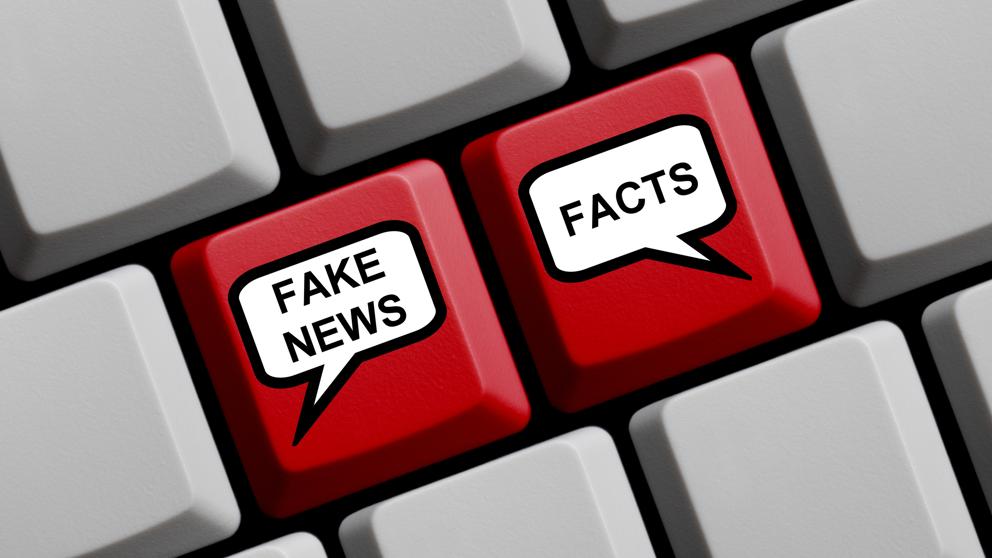Suchismita tells us about fake news and its perils. An exclusive for Different Truths.
 News is a very important part of our lives. We come to know what is happening in our surroundings, in our nation or even in the world in today’s date only through the news. News holds the power to connect the world in a thread. The mediums used to broadcast all the news are either online social media or offline media houses.
News is a very important part of our lives. We come to know what is happening in our surroundings, in our nation or even in the world in today’s date only through the news. News holds the power to connect the world in a thread. The mediums used to broadcast all the news are either online social media or offline media houses.
But what makes concern is the misuse of the power of journalism. Fake news, widely called as junk news, pseudo-news, alternative facts or hoax news, preach misinformation deliberately to confuse or mislead the viewers or readers and create a situation of utter mayhem.
Fake news, widely called as junk news, pseudo-news, alternative facts or hoax news, preach misinformation deliberately to confuse or mislead the viewers or readers and create a situation of utter mayhem.
The traditional media portals or online social media somehow get engaged to distort information for the purpose of their publicity or profit. And even, yellow journalism has increased after social media has been introduced in the world of journalism to promote the news. It is observable that the misinformations get the limelight or popularity more because they are made of the spices people wait to eat without giving a second thought.
The Intention Behind Fake News
Fake news is usually written and published by any of the media portals with an intention to promote vague conception among masses, to mislead or in order to damage any agency, other media houses, or person, any political leader or party, to gain financial profit etc. They are more often used in support of a party which portray themselves as biased sources working against other parties. These fake news use sensational, dishonest or over-decorated headlines to increase readership. Sometimes, they are paid for such activities from higher authorities.
Types and Examples of Fake News
The type of news, found in traditional news or social media or fake news websites, has no basis but is presented as being actually accurate. There are seven types of fake news:
There are seven types of fake news
- Satire or parody: When the fake news fools people without the intention to harm.
- False Connection: When headlines, visuals or captions do not match with the content.
- Misleading Content: When the content of the fake news is used to misguide people and to create an issue or an individual.
- False Context: When true news or genuine content is shared with false contextual information.
- Imposter Content: When genuine content is imitated and shared with false sources.
- Manipulated Content: When genuine information is manipulated to deceive.
- Fabricated Content: When the news produced content is false, designed to mislead and fabricated to bring peril.
Three Types of Misleading Information
There are also three types of information that mislead us:
l Mis-information: The false information that is circulated without any intent to harm.
l Dis-information: The extremely distorted information that is shared to do harm.
l Mal-information: The circulation of ‘genuine’ information with the intent to cause harm.
The fake news prevalent in social media has some definite examples. As per their views, they are defined as:
The fake news prevalent in social media has some definite examples.
- Clickbait: They are the contents which are made to attract attention and excite visitors to click on a link to a particular web page.
- Propaganda: It is one kind of an advertisement or information which is biased in nature and promotes misleading information in order to support a political party, an issue or a point of view.
- Satire/Parody: A satire is a form of literature or performing arts that are usually used to hold up vices, follies, abuses, and shortcomings to ridicule or criticise with the intent of shaming individuals, governments, political parties, any authorities or society for its betterment. The form of satire is humorous but the intention is social criticism. A parody is, in general, an imitative work that uses the skeleton or base of original work in order to add its own comedic elements that thrive towards either emphasising the flaws of the original work or trivialising it and in some cases both.
- Sloppy Journalism: Sloppy means messy, slushy, imprecise or incomplete. As per the name, sloppy journalism circulates incomplete or imperfect information about the news content.
- Misleading Headings: A misleading heading or a misleading headline is something that is absolutely different from the content of news or information. The differences can be either subtle or obvious.
- Biased or SlantedNews: Social media, being the major platform of biased news circulates some news which supports a definite party or authority or any religion and discriminates the opposition to prove the liability of its source. Some traditional media houses are even paid to spread biased or slanted news.
Fake News Create Pandemonium
1)Fake news creates confusion among the masses.
2) It provides wrong information and misleads us.
3) It is the reason for many unnecessary debates.
4) Some politically influenced news creates social media war among people.
5) Fake news containing religious facts create bigger issues sometimes.
6) Fake news distorts the aura of genuine contents.
7) It doesn’t have any liable contents in it.
8) Fake news is one kind of crime as it also prevents the growth of a nation.
9) Circulating fake news in order to gain popularity proves how much we have lost our brain.
10) It is no doubt a threat to the citizens of a country.

Prevent Fake News
1)We need to consider the source to understand its purpose.
2) We need to read beyond the headline to know the entire story.
3) We need to check the author to check their liability and credibility.
4) We need to assess the supporting sources.
5) We need to check the date of publication to prove if the story is proper and up to date.
6) We need to ask if it is a joke to come into a conclusion if the content is a satire.
7) We need to review our own biases.
8) We need to ask experts to get confirmation from any of the knowledgeable and independent people.
Conclusion
Fake news is never acceptable to protect the liability and loyalty of the broadcast media. The misinformations which spread in social media are responsible for creating issues. These catalyse vague thoughts in our mind.
Fake news is never acceptable to protect the liability and loyalty of the broadcast media. The misinformations which spread in social media are responsible for creating issues. These catalyse vague thoughts in our mind. Our mission should be to protest and prevent the spread of fake news. This is not the job of a single person. We all are equally responsible to protect the transparency of the media to maintain the strength of our nation. These wrongs will continue until and unless we wash away all the injustice and win the war against the fake news.
Let’s take an oath for a trustable news source and build a nation free of any malice.
Photo from the Internet






 By
By
 By
By
 By
By